It's the start of a new decade and, an inspiring and challenging time for higher education.
To kick-start the year we're taking a look at the top digital and marketing trends that could transform the higher education landscape, covering everything from social media to data analytics, new communication channels to emerging models of learning.
Here are our top 10 to help you stay ahead of the curve.
#1 Video and live content will continue on a trajectory
Video is still at the top end of the content marketing priority list. The only thing that trumps it is live video.
2020 will see universities increasingly experimenting on Instagram Stories, Facebook Live, Snapchat, TikTok, and perhaps also Linkedin Live. But having a clear content and channel strategy for this raw content will be crucial.
Yes, students, today want a first-hand authentic view of what's happening at your university. But the expectations of how that content is delivered are incredibly high and increasing.
.jpg)
#2 Voice search will change the SEO playing field
Today, 20% of mobile queries on Google are carried out through voice search. By the end of 2020, this figure could be closer to 50% of all searches.
Google, Facebook, and Amazon are key players in the search game and last year saw all three developing voice technology at a rapid rate.
You can now find information on just about anything using a personal voice or visual assistant. However, these typically only recite information from the first search result.
This will only serve to further intensify online search competition in 2020 with universities having to ensure that their website ranks exceptionally well in order to benefit from the technology.
This will be an increasingly important part of the student search journey and one that institutions need to be ready and optimized for.
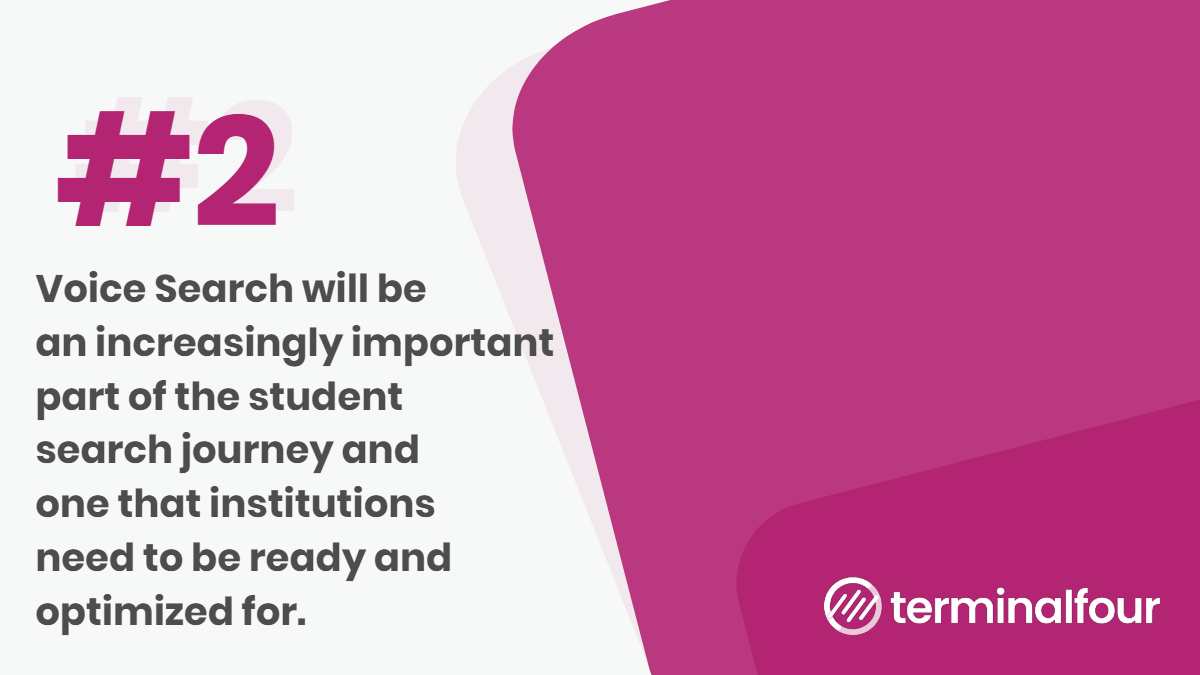
#3 Sentiment analysis and predictive analytics will play a bigger role in recruitment and supporting students
Institutions are moving further in leveraging data that can identify where their students are at across all touchpoints and stages of their educational journey. And by using predictive analytics institutions will provide students with support services before they encounter problems.
We've already seen institutions like the University of Nevada use data to pinpoint when students might need support interventions. By spotting patterns institutions will more accurately identify students at risk of exiting a degree program, triggering appropriate response mechanisms.
Meanwhile, the sophistication and scale of sentiment analysis, or social listening, is providing institutions with a depth of insight they've never previously had. It will increasingly be used to fine-tune marketing and communications to prospects, current students through to alumni and other stakeholders.
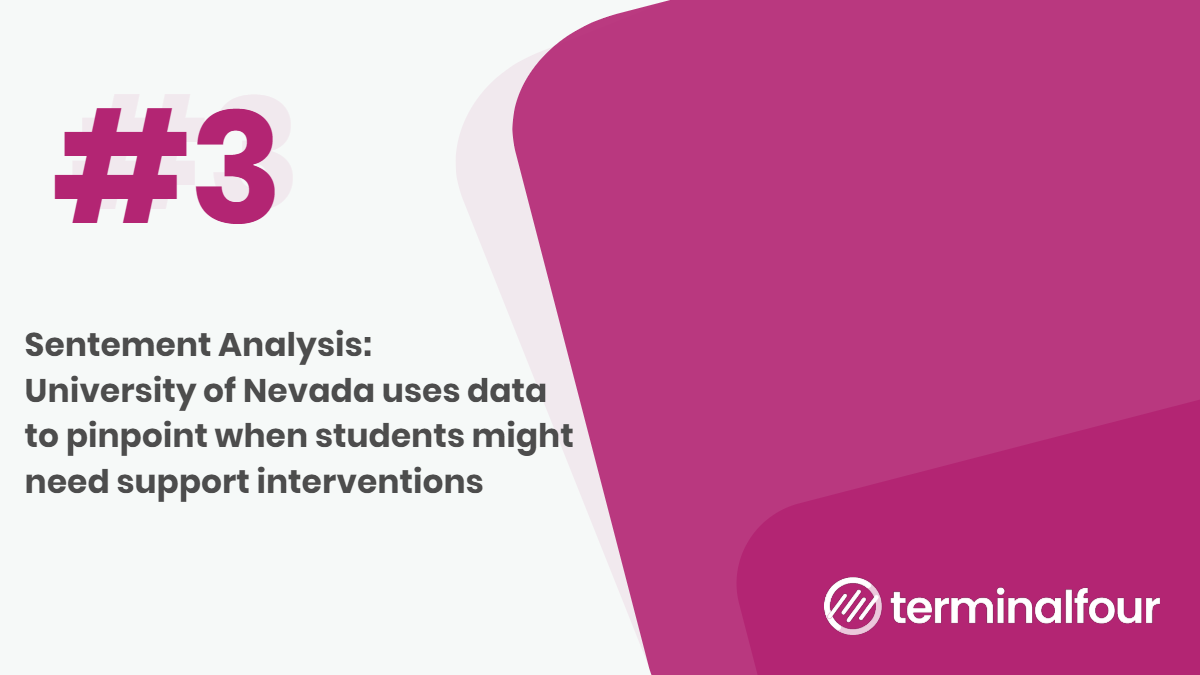
#4 Institutions will launch new degree programs aimed at fast-growth jobs
AI specialist, cybersecurity consultant, robotics engineer, data protection officer, big data developer. According to the latest Linkedin Emerging Jobs Report, these are the fastest-growing jobs.
Savvy institutions are tailoring their new degree programs for the emerging job market as well as working with technology companies to co-design degree programs.
2020 will see institutions shorten the time it takes to design and bring new programs to the market.

#5 An increasing role for student ambassadors
The university website is still the primary source of information for prospective students and social media is undoubtedly playing a bigger role.
But newly emerging platforms that use existing students to enhance the process of recruiting students will start to get more traction in 2020.
We covered social media influencers last year here and institutions will continue to build relationships with them, but products like The Access Platform and UniBuddy will also see student ambassadors become more involved and influential in the admissions process.

#6 New emerging models of education
The world of education is changing faster than ever, and online learning, in particular, is evolving and growing rapidly.
With less time available, many students now want to have access to learning programs that are flexible and accessible.
Last year we talked about the impact of Online Program Managers (OPMs) and how some institutions are using them to design and deliver online degrees to enable them to widen access to courses.
They will continue to have an impact in 2020, but this year will also see more institutions strengthening their own virtual degree capabilities and bringing in ‘try before you buy' and ‘stackable degrees' to maximize the options for students accessing their programs.
And institutions will unbundle traditional programs to offer shorter and more flexible learning options as we saw from MIT last year.

#7 The campus gets smarter
The quality of the campus experience will remain a decision factor for students, and technology will play an increasing part. From intelligent digital signage, contactless payment solutions, room bookings, and security, to the way students learn.
Institutions across the world will continue to push the boundaries of technology on campus and will rethink university life through innovative architecture, design, and technology. For examples of this already happening read here.
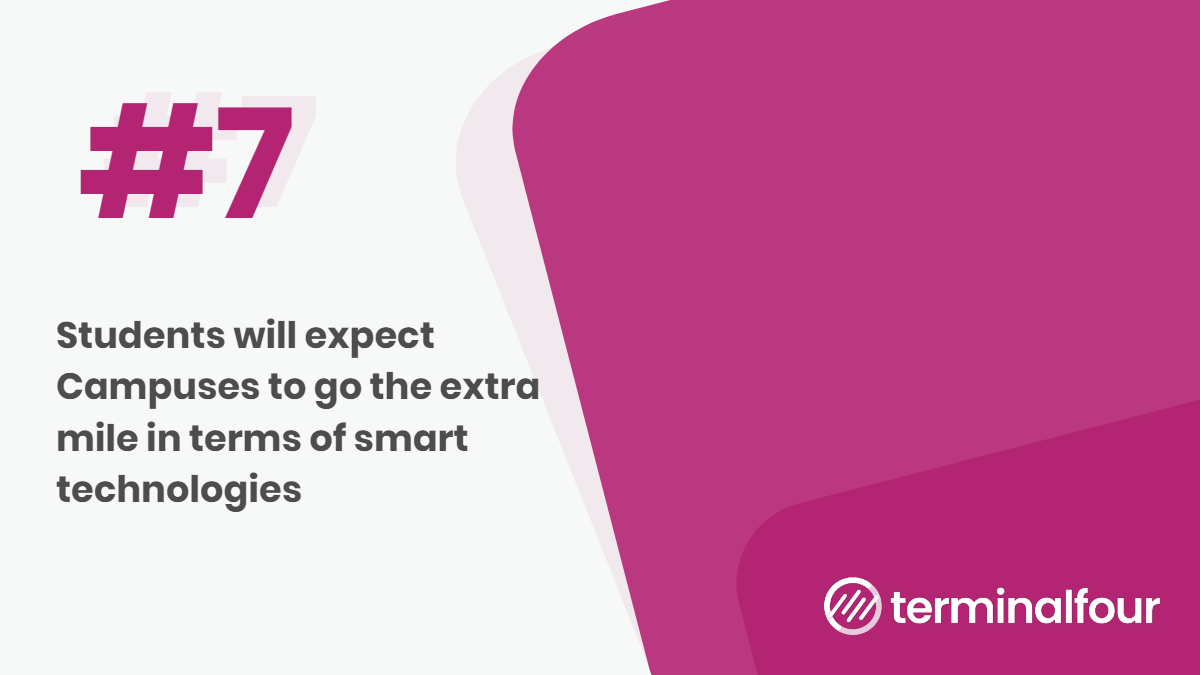
#8 Accessibility becomes an even bigger digital priority
There will be an increasing legal & regulatory focus on website accessibility which will, unfortunately, intensify the workload on higher education digital teams.
Some universities have already created roles to work on auditing & fixing accessibility problems specifically, but those who have not will be under pressure to deliver more with existing resources.
Our 2019 HE digital marketing & web survey is well worth a read on this subject. Website accessibility will be a hot topic for 2020.
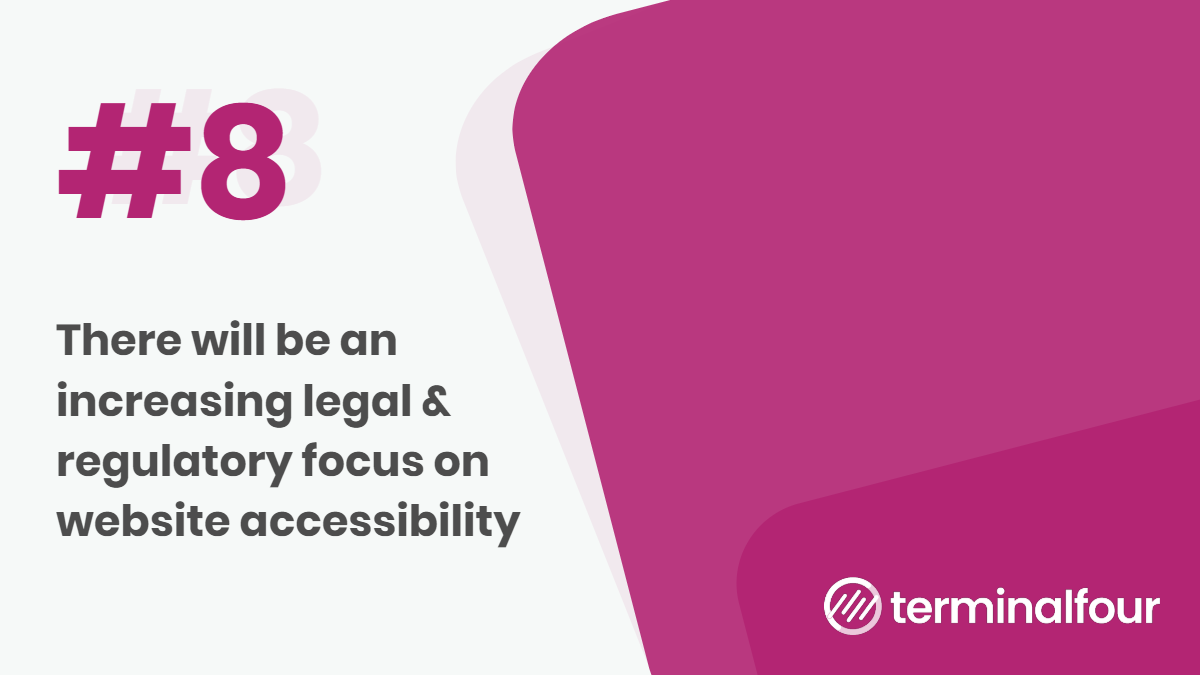
#9 The impact of Chatbots continues
We're predicting that this will be the year that Chatbots become a familiar presence and feature on the majority of institution websites in some way shape or form.
The technology is evolving quickly and is undoubtedly becoming more accessible to academic institutions. And we know that today's students like digital interactions like this, particularly when they are user-friendly, round the clock and provide good quality responses.
Chatbots and LiveChat will become more nuanced, the hand-offs perhaps more discreet and the experience will continue to rise in quality for institutions that invest in this powerful technology.
If you want to learn more about Chatbot technology visit here.

#10 More institutions will join TikTok and they'll find new creative ways to engage students there
Instagram and Facebook will still remain the prominent platforms for student recruitment and engagement but 2020 looks set to be the year institutions join TikTok (at least for organic content). Later this year we may also see the platform open up officially to advertising.
The content on the platform is fun, visual and funny. The demographic orientation is perfect for student recruitment. And students seem open to institutions featuring on the platform. It's time to get creative and join TikTok.
If you want to read more about TikTok visit here or here.
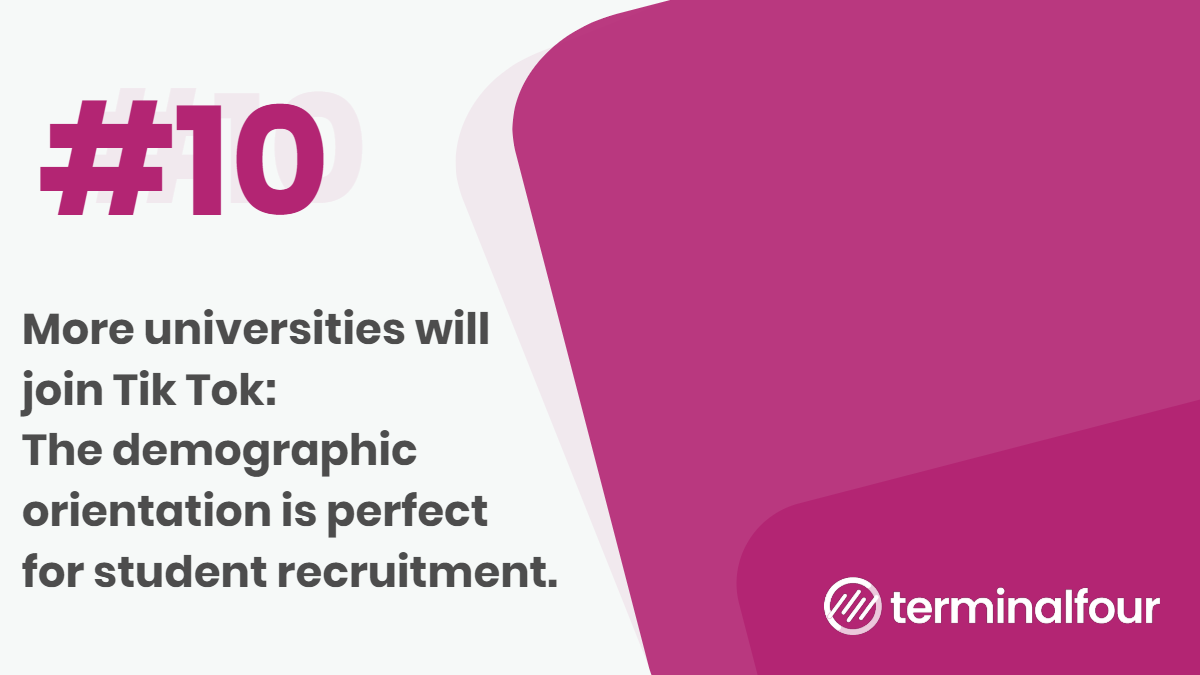
The emerging digital and marketing trends are both more human and more technological
Marketing and digital initiatives in higher education are becoming more personal and humanized, but the means to making those authentic connections are going to rely more on data, automation and new technology.
Alongside this hybrid pattern of development, we think the essence of HE marketing will remain the same but in 2020 we'll also see these newly emerging digital and marketing trends come to the fore.
Whatever your priorities for the year we wish you good luck and a happy New Year.

:format()//media/digital-trends-0120-1200.png)